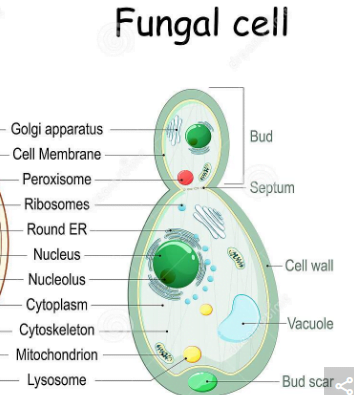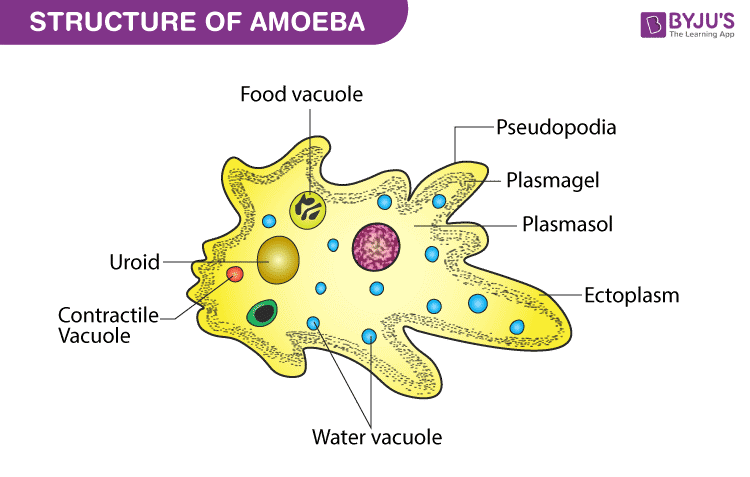What is a eukaryotic cell?
Eukaryotic cells are a complex and dependent cell that contains a true bound nucleus enclosed within the nuclear membrane and numerous membranes bound cell organelles such as the endoplasmic reticulum, Golgi apparatus, chloroplasts, mitochondria and ribosome.
In Greek, the term “eukaryote” defines “eu” as “true” and “karyon” as “nucleus”. Animals, plants, fungi and protozoa contain eukaryotic cells which are therefore classified under the Kingdom Eukaryote.
Eukaryotic cells are much larger and advanced in structure than prokaryotic cells. Eukaryotic cells have an ability to adjust in different environment by carrying out various metabolic reactions within a single cell which is why it helps the cell to grow many times larger than the prokaryotic cells.
Features of eukaryotic cell:
- Eukaryotic cell size ranges from 10 to 100 µm in diameter which are larger than prokaryotic cells.
- Eukaryotic cell contains locomotary organs which are flagella and cilia.
- The shape of the eukaryotic cell varies by the influence of environmental factors.
- The outermost layer of the eukaryotic cell is its cell wall which is made up of cellulose or chitin.
- Eukaryotic cells have more advanced cellular organization where the organelles are compartmentalized by multiple membranes.
- The enclosed nucleus of the eukaryotic cell contains a single, linear DNA which has multiple origins of replication.
- The eukaryotic cell divides by a mitosis process.
- It contains a cytoskeletal structure.
Diagram of eukaryotic cell:

(Source:https://alevelbiology.co.uk/notes/characteristics-of-eukaryotic-cellular-structures/)
Structure and functions:
Cell wall
In eukaryotes, cell wall is present only in plant cell but not in animal cell. A cell wall is a rigid structure that is composed of cellulose, hemicellulose, pectin and proteins. The function of the cell wall is to protect the cell from mechanical injuries and pathogen attacks. It also gives a definite shape to the cell and helps in cell to cell interaction.
Plasma membrane
Plasma membrane or cell membrane or cytoplasmic membrane helps in the exchange of molecules in and out of the cell. In animal cell, the plasma membrane functions as the outermost covering that separates the cell from the outside environment. It comprises of integral proteins between the phospholipid bilayer.
Cytoskeleton
Cytoplasm consists of 70 to 80 % water and is composed of organelles like microfilaments, microtubules and fibers which are the cytoskeleton of cell. Cytoskeleton provides perfect shape to the cell and stimulates the movement.
Nucleus
The nucleus contains a DNA molecule which is linear and is arranged in chromosomes in organized manner. The nucleus is enclosed by a nuclear envelope which consists of the outer and inner membrane and is permeable to ions, molecules and RNA materials. Ribosomes and rRNA are produced inside the nucleus.
Endoplasmic reticulum (ER)
- Endoplasmic reticulum is a network of tubes and membranes that carry material through the cell.
- ER functions in protein modification and lipid synthesis.
- ER is of two types: Rough ER (contains ribosomes and is site of protein synthesis), Smooth ER (does not contain ribosomes and is site of lipid synthesis).
Ribosomes
- Ribosomes are also called ‘Protein factories’ as it is the main site for protein synthesis and polypeptides.
- Ribosomes are made of proteins and ribonucleic acids.
- Eukaryotic ribosomes are of 80s type with large subunit 60s and small subunit 40s.
Golgi Apparatus
- Golgi apparatus is an important site for the glycoproteins and glycolipids formation.
- Golgi apparatus is made of many flat disc shaped structure called cisternae which are parallelly and concentrically arranged near the nucleus.
- Cis face is a forming face that faces the plasma membrane whereas Trans face is a maturing face that faces the nucleus.
Mitochondria
- Mitochondria produces energy and are therefore known as ‘Powerhouse of the cell’.
- Mitochondria synthesize protein with their own DNA or RNA.
- Mitochondria help in the regulation of cell metabolism.
Lysosomes
- Lysosome digest lipids, proteins, carbohydrates and nucleic acids by its hydrolytic enzymes such as lipases, proteases, therefore they are also known as ‘suicidal bags’.
Plastids
- Plastids are only found in plant cells and are of three types: Chloroplast, Chromoplast and Leucoplast.
- Chloroplast contains chlorophyll and gets involved in photosynthesis.
- Chromoplast contains carotene pigment that provides color to the plant.
- Leucoplasts store fats, oils, carbohydrates and proteins.
Examples of eukaryotic cells:
- Animal cells: Animal cell lacks cell wall and have a varied shapes. They perform phagocytosis and pinocytosis.

- Plant cells: Plant cells contain cell wall which provides shape to the plant. Plant undergoes photosynthesis which is aided by the presence of chloroplast.
- Fungal cells: Fungal cell wall is made of chitin. Some fungi contain septa, a hole that allows the organelles and cytoplasm to pass.

(Source:https://www.dreamstime.com/animal-cell-fungal-yeast-cell-structure-animal-cell-fungal-yeast-cell-structure-cross-section-anatomy-cell-biology-image189467026)
- Protozoa: Protozoan is unicellular eukaryotes that have cilia and flagella for locomotion.

References:
- https://byjus.com/biology/eukaryotic-cells/
- https://www.toppr.com/guides/biology/cell-the-unit-of-life/eukaryotic-cell/
- https://bio.libretexts.org/Courses/University_of_California_Davis/BIS_2A%3A_Introductory_Biology_(Easlon)/Readings/02.3%3A_Eukaryotic_Cell%3A_Structure_and_Function
- https://www.kenhub.com/en/library/anatomy/the-cell-an-introduction